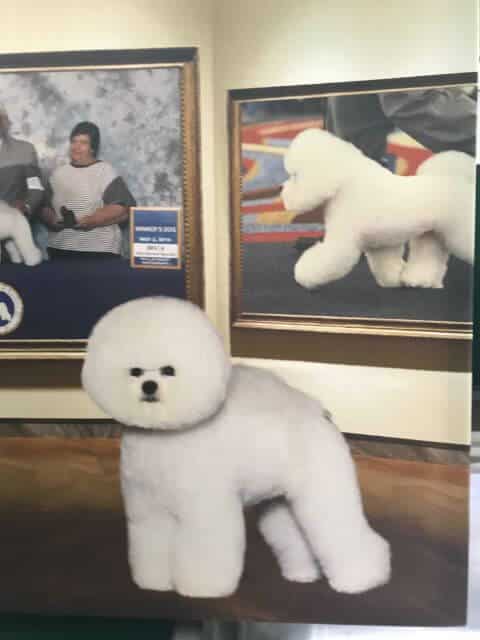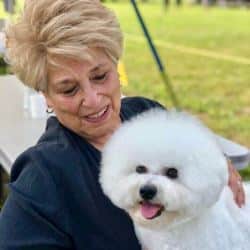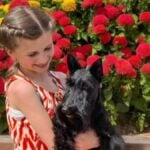
Home » The Bichon Frise

This article was originally published in Showsight Magazine, September 2020 issue.
When asked to write an article discussing my breed, I thought to myself, “What can I say that people don’t know about my breed? What is different about the Bichon? What makes them unique? What quality stands out above the rest that makes me point to a particular dog when I judge?” While I don’t profess to know everything about the Bichon, I will try to share what I have learned. As a breeder, you never know everything. Each litter surprises you with something new and different; we all have experienced this. But being in the breed for over thirty years (and producing almost one hundred champions, including the breeding program of the infamous “JR”), I do have a depth of knowledge. As a judge, I have been most fortunate in that I have judged National Bichon Frise Specialties in the United States, Canada, China, Japan and, next March, in Finland. I have seen magnificent dogs all over the world. Lastly, I am the JEC for the Bichon Frise Club of America.
I just gave the AKC Webinar last month. So here lies the real challenge…What am I going to write that most of you haven’t heard from me before? The first line of our standard paints the entire picture: “The Bichon Frise is a small, sturdy, white powder puff of a dog whose merry temperament is evidenced by his plumed tail carried jauntily over the back and his dark-eyed inquisitive expression.” The next part of our standard states, to paraphrase…the breed has no gross exaggerations and therefore there are no reasons for lack of balance or unsound movement. So, when I first read this to teach myself about the breed, I thought…so simply put, if I put these first two paragraphs together. I want a Bichon that is happy, holds his tail, and has sound movement. I didn’t know what gross exaggerations meant and, honestly, I still don’t. (Maybe a Poodle body?)
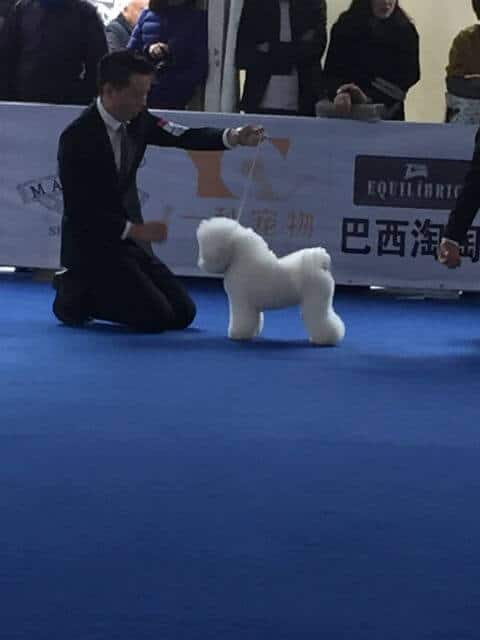
Then I came to balance. Now, having been a gymnastics judge since the 1970s, I was certainly comfortable with this part…not so short in body as to be restricted in movement, nor too long to appear clumsy and ungainly. A dog that stands well over his front, neck arched with head, neck and tail carried proudly. To me, this sounds like balance. Proportions were next. I learned that Bichons are not a square dog, and when I heard the term “off-square” it was another language.
Never having been good at math, I didn’t have a clue what that meant, but I learned. The body is 25% longer than tall (this 25% includes the forwardmost point of chest to the point of the rump), and is 1/4″ longer than the height at the withers. In essence, the measurement from withers to tail, or length of back, would be a 1/4″ shorter than the dog’s height at the withers. I know this sounds complicated, but if you were in front of me I could show you how to do this with just a simple movement of your fingers. The first line says “small dog.” But the actual standard says for both dogs and bitches: “9 1/2 to 11 1/2 inches.” (If an outstanding representative of the breed, it could be a half inch taller, but never under 9″ or over 12″.)
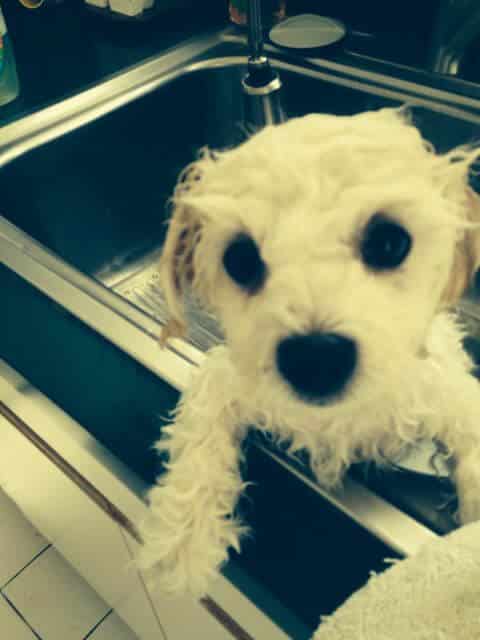
Now I thought to myself, that’s quite a difference. But because of my gymnastics background, size never plays a part in my decision. I have seen a 10″ dog/bitch take fewer steps than a 12″ dog/bitch. I have seen smaller dogs cover more ground, so I know which dogs are better balanced. A free-moving dog, one without the handler’s help, is beauty in motion no matter the size. Size should never determine a better Bichon. Now my favorite part: the Head. Nothing can compare to the beauty of a beautifully-balanced contrast of sparkling black eyes, a black nose, and black lips against the stark—yet soft—white of a Bichon’s coat. I want to see round eyes, facing front, surrounded by black halos, ears set slightly above; an equilateral triangle from the corner of the eyes to the nose. I want to see an underjaw that can house a scissors bite. (Out of line teeth never bother me.) I want to feel a head that is three-to-five from the stop to the back skull. Now, here’s a finger exercise I can teach you: Take your thumb and index finger, put them on the top of the nose to the stop. You see how much that distance is.
Then take your thumb and put it where your index finger was, and put your index finger behind the head. You will feel the three-to-five ratio. (Only took me ten years to learn this!) I have not covered shoulders, but we all need good shoulders to move. Ours are a 45-degree angle. (I have not covered restricted rear movement because, in my mind, most Bichons have good rear angulation.) However, they are too straight in the shoulders, so their rear legs have nowhere to go. I have not covered coat. You know a Bichon has a double coat that supposedly bounces. We can have 10% color in one place or dispersed.
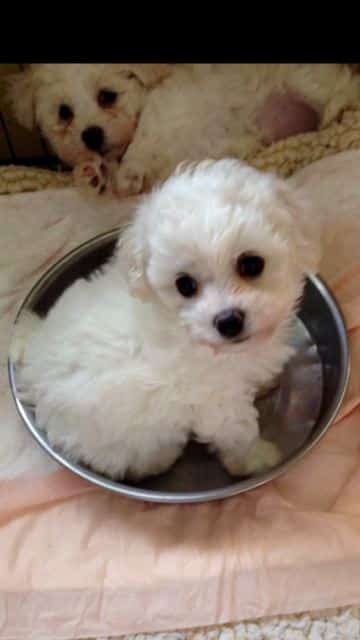
I was asked to write an article about the Bichon and judging. This is what I would like to say: The Bichon is a breed of illusion. A good groomer can make a mediocre dog look wonderful…and God bless them. They have a talent. But, get your hands in there. Feel the dog. Look into their faces; always from the front, not the side. Never pry open the mouths. Why would you…what for? Don’t spend time picking up each leg to check for pads. If a pink pad is the basis of a decision, reevaluate your priorities. Remember that puppies can have color. They will outgrow it. They can be under 9″. They can drop their tail. (This only applies to puppies.) Give them a second chance. Remember the first line of the standard. Their coat can be softer. They are puppies, make it fun. So when I judge, I watch each dog walk in. I want to see a sense of self, a sense of assurance. Then I look at each dog’s head. I want that expression that says, “Here I am. You don’t have to go any further!” Then I stand back and look for type, and have them go around—never, ever racing. I am too old to get whiplash watching a handler run!
I put each dog on the table, look closely at the face, do my stop measurement, check the bite, feel the sternum, run my hands down the legs, measure the layback, see how tight the elbows are, measure the back, check the tail set, feel the rear angulation, step back and look at the face again, thank the handler, and say to myself after the examination, “Well, this dog feels real good. Now let me see what he/she thinks of him/herself.” This is when I look for free and easy movement, head carriage, tail carriage, and that sense of self. In essence, I examine a dog on the table and judge a dog on the ground. I want to see a show pony. I want that merry little dog that carries its tail jauntily over its back. Sometimes a dog just jumps out at you. Sometimes you find one that gives you chills. These are the moments we all cherish.
